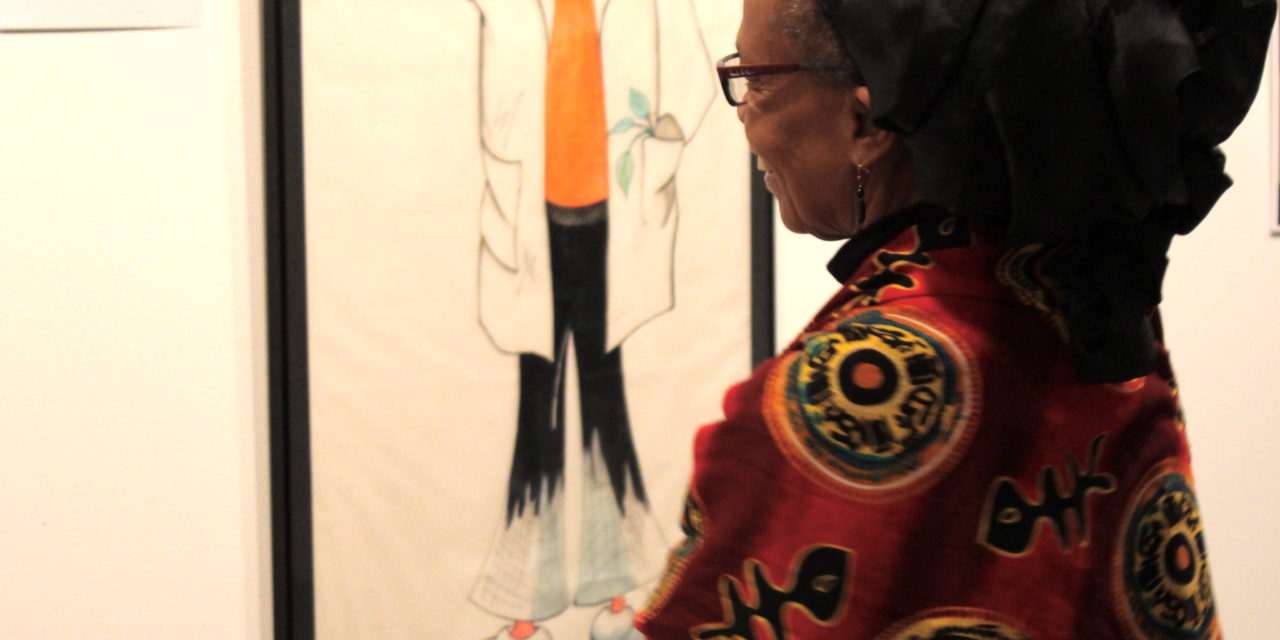Elders of N.C.State’s African American Community Honored with New Art Gallery Exhibit
DeErricka Green | Managing Editor
The Peer Mentor Program.
The African American Symposium.
The African American Cultural Center.
The first two programs and the center itself represent only part of the legacy that trailblazers Dr. Lawrence M. Clark and Dr. Augustus Witherspoon left for N.C. State students.
Credited as “founding fathers” within the African American community on campus, Witherspoon and Clark gladly assumed multiple roles – as community leaders, professors and mentors – that ultimately transformed the campus climate for students of all backgrounds.
On Jan. 31, the African American Cultural Center celebrated those legacies with the debut of “Writing the Lion’s Tale: The Lives and Work of Dr. Augustus Witherspoon and Dr. Lawrence M. Clark,” an exhibit that celebrates the influence these men used to open doors.
The exhibit features photographs, videos and interactive pieces painting the timeline of each man’s life. A part of the 125th Anniversary Celebration of the University, the exhibit will remain open in the African American Cultural Center Art Gallery until Aug. 1.
“The Lion’s Tale” focuses especially on the determination of Witherspoon and Clark to broaden the perspectives of students, faculty and staff.
Witherspoon came to North Carolina State University in 1969, pursuing a master’s degree in Botany. When he graduated two years later, he became the second African American to earn a doctoral degree from the University. Later, he became the University’s first African American professor and the only African American with a campus building bearing his name.
Clark soon followed, joining the faculty in 1974 as Associate Provost and a professor in the College of Education. He proved instrumental in breaking down racial barriers and pushing the University to talk openly about race.
Thanks to Clark, many important Civil Rights figures, including Rosa Parks and C.T. Vivian, came to the University to hold workshops for faculty, staff and students of all backgrounds.
“Dr. Clark and Dr. Witherspoon were not only engaged in the African American community,” Dr. Sheila Smith-McKoy, Director of the Cultural Center, said. “They were engaged in a campus-wide endeavor, working on numerous projects to make the University a more inclusive and diverse institution.”
The exhibit also highlights the commitment of Witherspoon and Clark to education. They believed in knowledge’s power to change lives and felt a duty to pass on that knowledge.
“Dr. Clark’s favorite poem was ‘When I Know the Power of my Black Hand’, by Lance Jeffers,” Toni Thorpe, the cultural center’s program coordinator, said. “He and Dr. Witherspoon always felt it was their duty to run their leg of the race, teaching students the power of their black hand. Then, they would pass the baton. Dr. Clark would say to me, ‘Prepare the students to pass the baton when it’s time for them to run the race.’ ”
During a time of cultural separation, Witherspoon and Clark played a critical role in helping to improve the climate for the entire N.C. State community, fighting to open the doors of inclusion. Their legacies live on through projects such as the Peer Mentor Program, Witherspoon Student Center and Lawrence M. Clark Lecture Series.
Today, with the efforts of Thorpe, Smith-McKoy and others, students of all races are prepared to carry the baton and continue what Witherspoon and Clark began.





Brilliant article